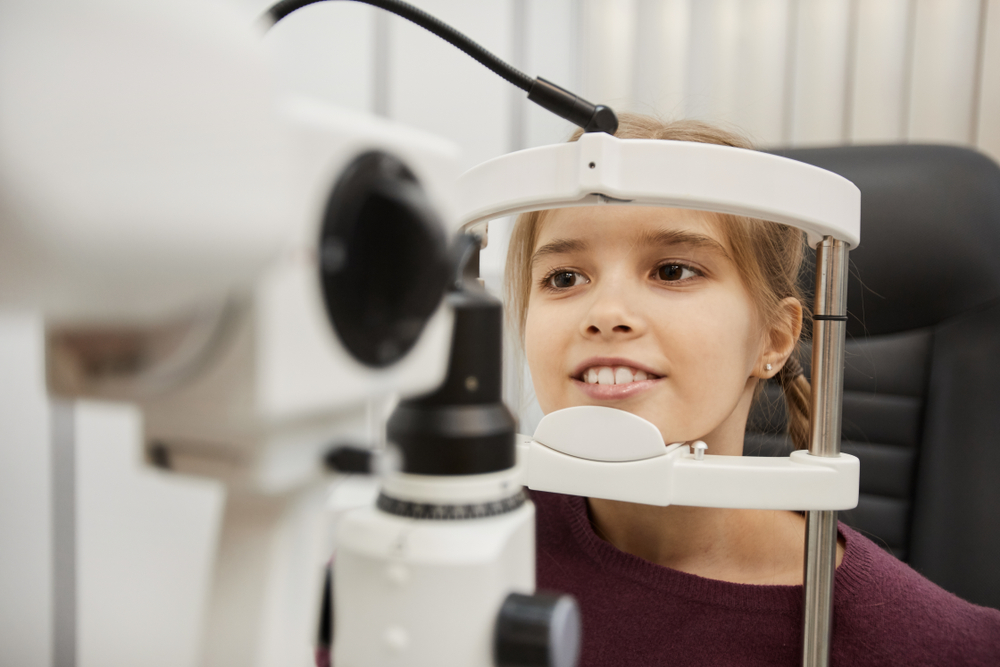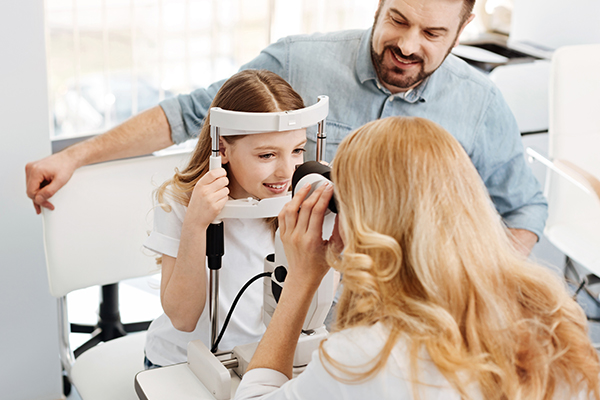Pediatric eye exams are a thorough assessment of your child's visual system, conducted by an eye doctor. These exams go far beyond what a school nurse's vision screening can do, offering a comprehensive look at your child's eye health and function.
Why are Pediatric Eye Exams Important?
Pediatric eye exams are crucial because they help ensure normal vision development in children. As a parent, you might not always be able to detect if your child is struggling with vision problems. Kids often don't complain about vision issues simply because they don't realize that their vision is not normal. They might assume that everyone sees the world the way they do. Regular pediatric eye exams can detect these issues early, even before they start to impact a child's life.
Many vision problems and eye diseases can be treated effectively if caught early. Similarly, other problems, such as refractive errors, can be managed effectively with timely intervention.
Another reason why pediatric eye exams are so important is that they help identify vision problems that could interfere with learning. Children rely heavily on their vision to learn, both inside and outside the classroom. Any vision issue could potentially affect their academic performance and overall learning experience.
The Connection Between Vision and Academics
Statistics suggest that approximately 80% of what children learn in school is presented visually. This means that if a child has an undiagnosed vision problem, it could significantly affect their academic performance.
For example, if a child has an uncorrected refractive error, they might struggle to read the board in class, leading to difficulty understanding lessons. Similarly, an issue with eye focusing or eye coordination could make it hard for them to concentrate on close-up work like reading or writing. Over time, these issues could lead to academic struggles, frustrations, and a lack of confidence.
Additionally, the role of vision in learning goes beyond just academics. It also impacts a child's physical education and social development. A child with poor visual skills might struggle in sports, leading to a lack of interest in physical activities. Similarly, vision problems could affect a child's social interactions and self-esteem.
Common Pediatric Eye Problems Detected During Exams
Pediatric eye exams can detect a range of vision problems and eye conditions. Some of the most common ones include refractive errors, lazy eye, crossed eyes, color blindness, and congenital eye defects.
Refractive errors are the most common vision problem in children. They occur when the shape of the eye prevents light from focusing directly on the retina. The main types of refractive errors are nearsightedness, farsightedness, and astigmatism.
Lazy eye, or amblyopia, is a condition where one eye doesn't develop like the other, leading to a difference in vision between the two eyes. Strabismus, or crossed eyes, is a condition where the eyes do not align with each other when looking at an object. Both of these conditions can often be corrected if detected early.
Color blindness is a condition where a person cannot distinguish between certain colors. While it's not a debilitating condition, it's important to detect it early to help the child adapt. Lastly, pediatric eye exams can also detect congenital eye defects, which are eye problems that occur at birth or shortly thereafter.
The Lasting Impact of Regular Pediatric Eye Exams
Regular pediatric eye exams are integral to ensuring your child's vision health and overall well-being. They not only help detect vision problems early but also ensure that your child's vision development is on track.
To learn more on the importance of pediatric eye exams, visit Eyes on Preston Park at our office in Plano, Texas. Please call (972) 519-0006 to schedule an appointment today.












